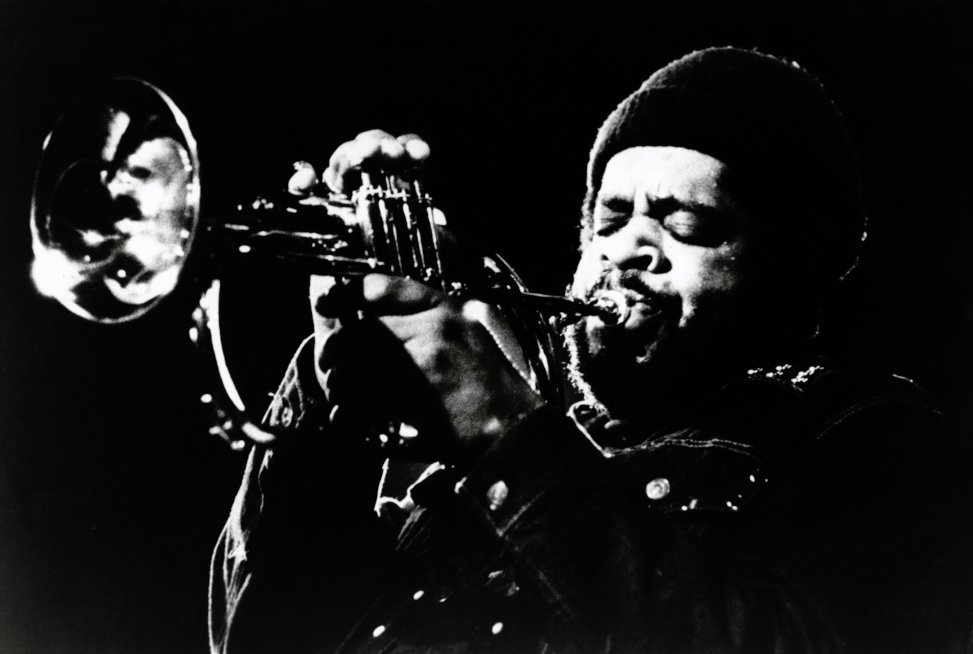Byrd in Hand (1959)
- Label: Blue Note Records
- Key Tracks: "Here Am I," "Bronze Dance"
- Significance: A quintessential hard bop album featuring Byrd’s sophisticated trumpet lines and collaborations with players like Pepper Adams and Charlie Rouse.
Donald Byrd (1932–2013)
Visit Amazon for Donald Byrd MusicEarly Life and EducationDonaldson Toussaint L’Ouverture Byrd II, better known as Donald Byrd, was born on December 9, 1932, in Detroit, Michigan. Raised in a musically rich environment, Byrd’s father was a Methodist minister who also played the trombone, fostering a household filled with music. Donald Byrd took to music early, learning the trumpet and becoming proficient by his teenage years. He played in a band led by Lionel Hampton while still in high school, demonstrating prodigious talent. Byrd’s formal education was as impressive as his musical ability. After earning a bachelor’s degree in music from Wayne State University, he served in the United States Air Force, where he played in the Airmen of Note, the premier jazz ensemble of the Air Force. Following his military service, Byrd pursued further studies at the Manhattan School of Music, earning a master’s degree. He later became one of the first jazz musicians to earn a doctorate in music education from Columbia University. The Hard Bop EraIn the 1950s, Donald Byrd emerged as one of the most prominent trumpeters of the hard bop movement. He joined Art Blakey’s Jazz Messengers in 1955, replacing Clifford Brown, and quickly established himself as a masterful and lyrical trumpeter. Byrd worked with a who’s who of jazz greats during this period, including John Coltrane, Sonny Rollins, Jackie McLean, and Thelonious Monk. In 1958, Byrd began recording as a leader for Blue Note Records, where he released a string of influential albums such as Byrd in Hand (1959) and Fuego (1960). His style, characterized by clean phrasing, soulful melodies, and technical prowess, made him a standout in the crowded jazz scene of the era. Fusion and ExperimentationThe 1960s saw Byrd exploring more experimental territory. Albums such as A New Perspective (1963) blended gospel influences with jazz, including the use of a choir on tracks like “Cristo Redentor,” which became one of his signature pieces. This period marked Byrd’s increasing interest in expanding the boundaries of jazz, incorporating elements of classical music, soul, and African rhythms. By the late 1960s and early 1970s, Byrd transitioned into jazz fusion, a style blending jazz improvisation with funk, rock, and R&B grooves. His 1973 album Black Byrd was a landmark recording, becoming Blue Note Records’ highest-selling album at the time. Produced by the Mizell Brothers, Black Byrd was a commercial triumph, and it marked Byrd’s ability to bring jazz into the mainstream without sacrificing his artistry. Educational ContributionsIn addition to his groundbreaking music, Donald Byrd was a dedicated educator. He taught at several institutions, including Rutgers University, Howard University, and Oberlin College. Byrd was instrumental in founding the Jazz Studies program at Howard University, where he mentored the Blackbyrds, a group of student musicians who achieved commercial success in the 1970s under his guidance. Byrd’s commitment to education reflected his belief that music was both an art form and a means of empowerment. Later Years and LegacyIn his later years, Byrd continued to perform and teach, though he scaled back his recording activities. He received numerous accolades for his contributions to jazz and education, including induction into the DownBeat Jazz Hall of Fame. Byrd’s influence can be heard in the work of countless musicians, from the hard bop trumpeters who followed him to the hip-hop producers who sampled his fusion-era recordings. Donald Byrd passed away on February 4, 2013, in Dover, Delaware, at the age of 80. His legacy endures as a testament to his creativity, versatility, and dedication to both his craft and the next generation of musicians. Influence and RecognitionDonald Byrd’s work has been sampled by numerous artists, including A Tribe Called Quest, Guru, and Nas, cementing his place in both jazz and hip-hop history. His ability to adapt and innovate across multiple genres made him a rare figure who bridged traditional jazz and modern popular music. With a career spanning over five decades, Donald Byrd remains one of jazz’s most iconic figures—a musician, innovator, and educator whose contributions continue to resonate. Donald Byrd's Most Notable AlbumsHard Bop EraByrd in Hand (1959)
Fuego (1960)
A New Perspective (1963)
Jazz Fusion and Funk EraBlack Byrd (1973)
Street Lady (1973)
Places and Spaces (1975)
Stepping Into Tomorrow (1975)
Collaborations and Later WorksFree Form (1961)
The Blackbyrds Albums
Legacy AlbumsEthiopian Knights (1972)
|